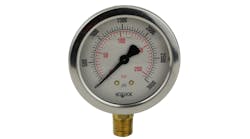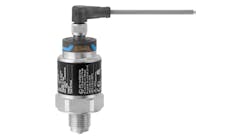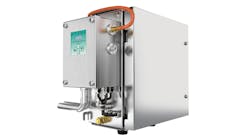HOW TO SELECT A PRESSURE SWITCH
Pressure switches are widely used by many industries and within many applications. The basic function of a pressure switch is to detect a pressure change and convert it into an electrical signal function—typically on/off or off/on. Pressure switches may be of electro-mechanical or electronic/solid-state design; and while each may have its advantages, arriving at the correct pressure switch for your application is the same. This link contains basic information on setpoint and dead band, system pressure, electrical considerations, switch mounting, process media and wetted parts, and the process environment and how these factors affect your choice of pressure switch. The direct link is at http://tinyurl.com/8ytvctu.
United Electric Controls
617/926-1000
www.ueonline.com
ISOLATION SEALS FOR PRESSURE MEASUREMENT
This white paper describes remote seals for protecting and isolating transmitter diaphragms from harsh or corrosive fluids and slurries. The six-page document covers capillary fluids, response times, temperature effects, and installation, as well as configurations for measuring pressures, flowrates and liquid level. Direct link is at http://tinyurl.com/7ql2956.
ABB
215/674-6000
www.abb.com/measurement
PRESSURE STRAIN AND FORCE HANDBOOK
Omega's new Pressure, Strain and Force Handbook, 9th edition, Vol. MMXI, shows over 1600 pages of products for the measurement, display and control of pressure, differential pressure, barometric pressure, absolute pressure and vacuum, and new technical articles including "Wireless Measurement of Pressure" and "Strain and Force Parameters." Also included is a broad selection of products including pressure and vacuum switches, dial pressure gauges, load cells, force translators, rotary and static torque sensors, weighing hardware, strain gages, strain instrumentation, displacement sensors and proximity sensors. Special sections cover accelerometers, dynamic pressure and force transducers, pneumatic valves, regulators, sanitary fittings, automation and temperature products. For more information, go to www.omega.com/literature/pressure9.
Omega Engineering
888/826-6342
www.omega.com
GUIDE TO PRESSURE MEASUREMENT
This is a complete precision pressure measurement manual that covers the fundamentals of pressure measurement, dead-weight pressure testers, calibration of dead-weight testers, manometers, secondary comparison pressure standards and the selection of a pressure measurement standard. The 56-page PDF file is free and downloadable. The direct link is at http://tinyurl.com/74odkox.
Ametek
610/647-2121
www.ametek.com
HOW TO USE PRESSURE SENSORS
Part of the NI Developer Zone series, this tutorial from National Instruments should enable the reader to understand the types of sensors available and the appropriate hardware to accurately take pressure measurements. It covers the definition of pressure, the pressure sensor itself, signal conditioning used to measure pressure, data acquisition for pressure measurements, and a list of references and next steps in gaining pressure measurement knowledge. A direct link to the tutorial is found at http://tinyurl.com/7jxp6hz.
National Instruments
www.ni.com
DP PRESSURE VIDEO
This video guide explains the different types of primary elements used to measure flow and how they produce a differential pressure, which can then be converted to a linear measurement of flow from calculating the square root of the pressure. It also covers the ways to install a DP transmitter on different types of media flow. The same link will take you to other pressure videos. http://blog.sensorsone.com/
sensorsone
www.sensorsone.co.uk/



